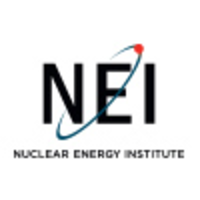The Nuclear Energy Institute (NEI) is the policy organization of the nuclear energy and technologies industry and participates in both the national and global policy-making process. NEI’s objective is to ensure the formation of policies that promote the beneficial uses of nuclear energy and technologies in the United States and around the world.
Uranium is an abundant metal and is full of energy: One uranium fuel pellet creates as much energy as one ton of coal, 149 gallons of oil or 17,000 cubic feet of natural gas. It does not come out of the ground ready to go into a reactor, though. It is mined and processed to create nuclear fuel.
How Is Nuclear Fuel Made?
- Before uranium goes into a reactor, it must undergo four major processing steps to take it from its raw state to usable nuclear fuel: mining and milling, conversion, enrichment and fuel fabrication.
- First, uranium is mined with conventional methods or by in-situ leach mining, where carbonated water is shot into underground deposits and piped up to the surface. The worldwide supply of uranium is diverse, coming primarily from Kazakhstan, Canada and Australia. In the United States, uranium is mined in several western states.
- To sustain the chain reaction necessary to run a reactor, the uranium will need a high enough concentration of a specific isotope, uranium-235. Natural uranium is converted into several different forms to prepare it for enrichment. Special facilities enrich the uranium so that it can be used in a nuclear reactor. The major commercial fuel enrichment facilities are in the United States, France, Germany, the Netherlands, the United Kingdom and Russia.
- The enriched uranium is converted again into a powder and then pressed into fuel pellets. The fuel fabricator loads these pellets into sets of closed metal tubes called fuel assemblies, which are used in nuclear reactors.
What Happens to Nuclear Fuel After It’s Been in a Reactor?
- A single fuel assembly spends about five years in a reactor on average, powering the system that generates electricity.
- Typically, every 18 to 24 months, a nuclear plant stops generating electricity to replace a third of its fuel assemblies. The removed assemblies are placed in a spent fuel pool where they cool over time.
- The radioactive byproducts remain contained in the used fuel assemblies.
- After the used fuel assemblies have cooled to the point that they no longer need to be stored underwater, they are removed from the pools and safely stored at the plant in large containers made of steel-reinforced concrete.
- Every nuclear plant stores used fuel as the industry awaits the completion of either a consolidated interim storage site or permanent disposal repository by the federal government.

